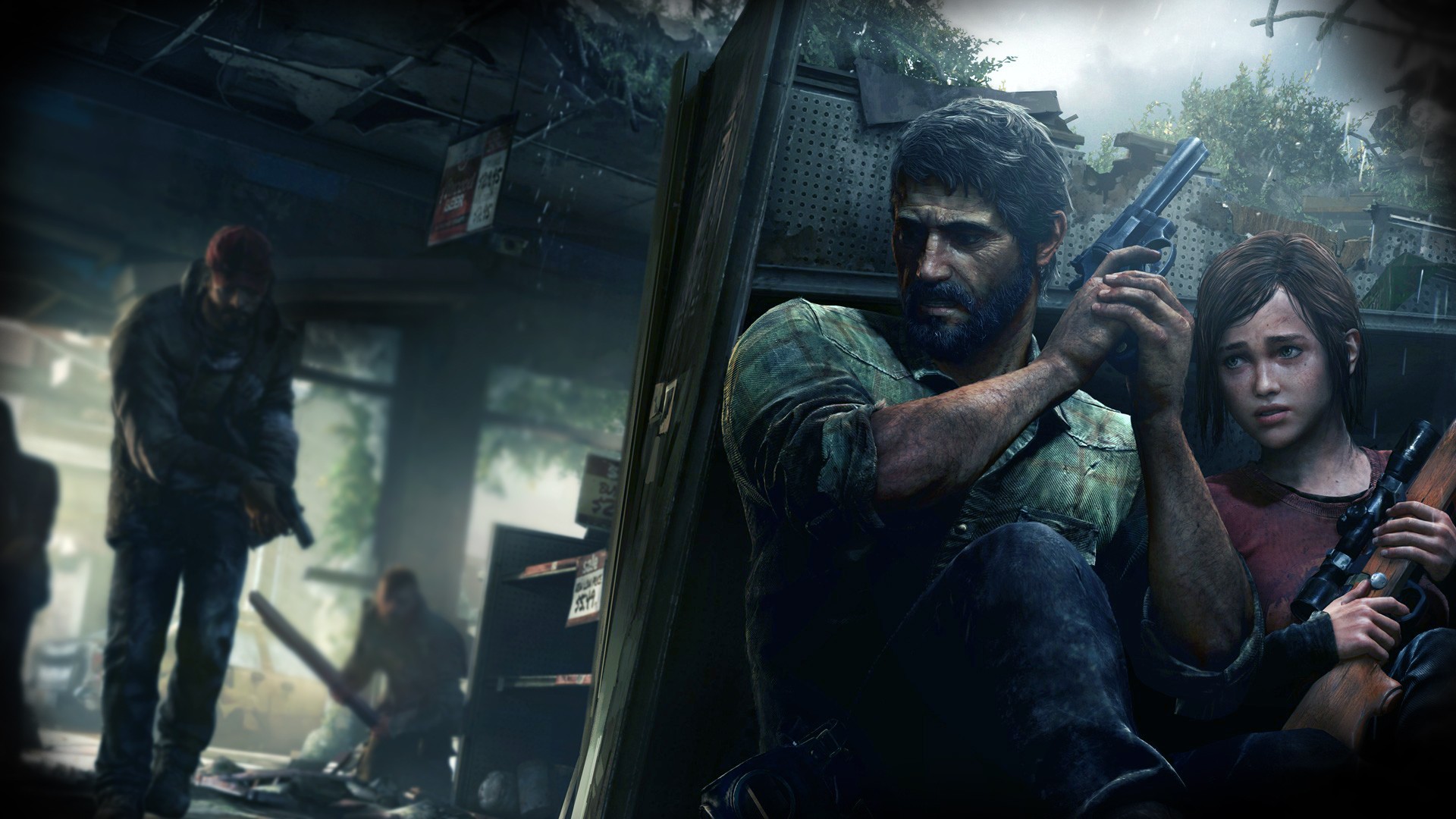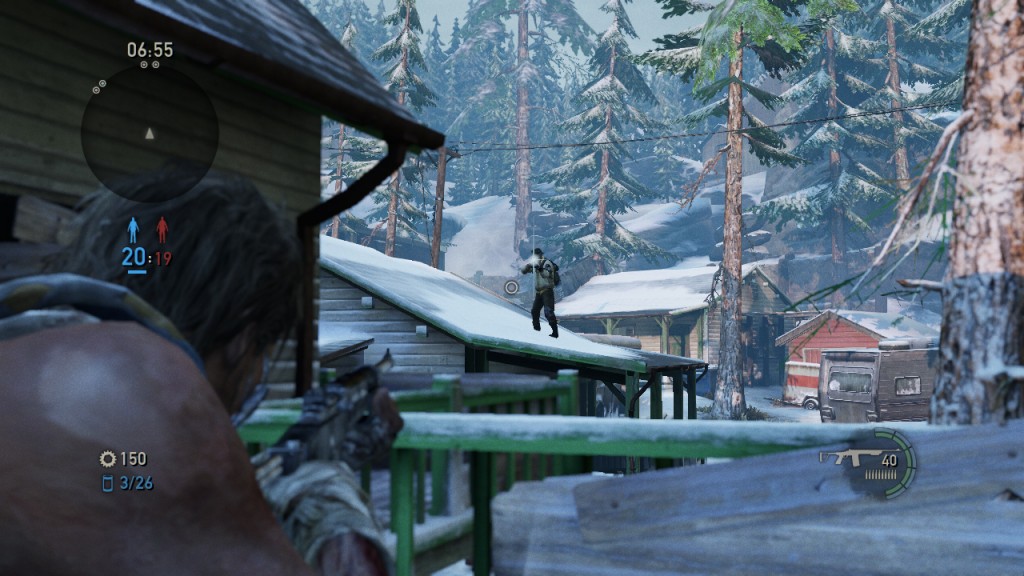The Last of Us is Naughty Dog’s best game. Not only that, but in my opinion, it is the best game on PS3, the best story told in gaming (so far) and a literal achievement in games as far as maturity, storytelling, gameplay and graphics. It is, by no stretch of the imagination, a masterpiece, and stands as a game that could very well define this generation as it closes out.
The game stars Joel and Ellie, played by Troy Baker and Ashley Johnson respectively, and they do a fantastic job of portraying those characters. Not only are the models of the characters done perfectly, but the motion-capture and voice acting is spot on. The Naughty Dog team even did well to capture the mannerisms of the characters from shifty eyes to long sighs to quick intakes of breath. The characters you meet along the journey through the apocalypse come alive alongside Joel and Ellie because of the great work with motion capture and voice acting.
Never has a character been so real and relatable to me as Ellie is in The Last of Us. She literally says certain things that someone of my age and experience, agreed with in all regards. There is even a scene of the game where she puts into words her belief in a way I have never been able to, but agree on entirely. Ellie, as real as she is, is an achievement alone, as far as I’m concerned.
That wouldn’t be as achievable if the game itself wasn’t so damn beautiful. From dark scenes in foggy sewers, through lush green forests, and onto snowy hills, everything is excellently crafted. Rooms come alive with quiet stories told through carefully hand-crafted pieces of information laced within them, such as a simple book, or a corkboard full of newspaper clippings. The world itself comes alive and tells stories with great looking environments that speak about a 20-year war that cannot be won. It is easily one of the PS3s best looking games, if not being definitively its most gorgeous one, for its massive attention to detail and complex towns, cities, and other environments.
Going into Last of Us believing it’s your standard third person shooter is a dangerous assumption to make. It takes the idea of shooting as the priority on the battlefield away. Joel is an older character, and doesn’t feel invincible, so when he gets shot or hit, it feels like he is thrown way off balance. That’s the strongest piece to the combat: the weight and difficulty of every option. You can stealthily make your way through the battlefield and strangle your opponents, sometimes letting enemies lie, or instead taking them all down. You can try using all of the weapons you can craft, like molotovs or nail-bombs, to create traps and destroy enemies in groups. Or, you can take shots with the limited ammo you’re given with the risk of being overwhelmed. At most times, I found myself blending these strategies together, because when you come across a large group of enemies (between five and ten), you are in serious danger at all times. The combat works really well too, because the weighty shooting is strong, but difficult to master, and the severe weapon sway that you start off with accurately gives the feeling of urgency and difficulty in every shot. It is a shooter like no other before it.
Going back to the crafting, that system is possibly the most important part of the gameplay. You find supplies laced throughout the environment, like alcohol or sharp objects, that you can used to make a series of items such as a shiv, to open locked doors or instantly stealth-kill enemies, but it’s up to you to choose which of those uses take priority. Other items include molotovs and nail bombs, like I mentioned before, but many of the supplies needed to make those are also needed to make necessities like health kits, as The Last of Us isn’t a game that gives you an invisible recharging health bar. Though it happens more often on the higher difficulties, you may find yourself in tough combat with low health as I did, and have to choose whether or not to craft a health kit or a molotov, as they require the exact same supplies. You are faced with these choices almost constantly, and they never get easier.
That crafting system plays a big role in why multiplayer is so solid as well. The multiplayer is simple four on four, but takes in all of those aspects of crafting and limited supplies (especially ammo), so the tense fire-fights also include those moments when you are hurriedly crafting a molotov and hoping someone doesn’t sneak up on you. It also brings in an aspect of Counter-Strike, with the idea that the currency you earn in a match can be used to buy upgrades for your weapons, more starting ammo, and possibly a third, purchasable weapon, depending on how you setup your class. It’s a tense, stealth-driven multiplayer that is unlike anything I’ve played before, and offers a great and unique experience, much like the campaign.
Back to the story though, the given supplies also become necessary when fighting the infected. The other type of encounter in the game with the fungus-infected “zombies” for lack of a better term, changes literally all of the rules. Fighting them does not in any way feel like fighting off infected in any game before. There are several types, many of which work in tandem with each other. Runners, the newly infected, are loud and charge you, leaving no chance to catch your breath. Clickers, however, the blind, aged infected, play off sound to take you down in one hit if they get their hands on you. Working around them provides a different challenge, especially when the game throws new kinds of infected at you with no warning, leaving you to discover how their behavior works alone and in practice.
All of these set pieces play into the world-building in The Last of Us. The infected and the humans fight in different ways, but both are equally as brutal. The game never stops reminding you that the people you’re fighting are no different than you: they’re trying everything they can to stay alive. It’s a world where, sorry for the cliché, but there is absolutely no black or white. Everyone is grey, from the military that rules, to the Firefly group that rebels against them. Everyone is brutal, and cruel, and have done dark things in pursuit of one goal: survival.
Don’t think the game is just combat though. On many occasions, you’ll find yourself in a lengthy scene simply exploring a large and open area, with pieces of choice dialogue spruced throughout. Here is where you see those untold stories that hide in rooms with little pieces of the past layered in them. It just feels like an adventure game at these points, where at others it is true survival horror.
That desperate search for survival is what makes the relationship of Joel and Ellie so special and important. Joel is your brutal killer who has been fighting this world for 20 years, and Ellie is young, innocent, naive, and knows no other world. The chemistry between them demonstrates exactly what this world is better than any story in a game I have experienced. They define what The Last of Us truly is, as you watch those characters take many twists and turns into deeper and darker situations.
Closing Comments:
The Last of Us is a game set in a grim world, with grim characters and even darker situations. It doesn’t tell a happy tale, but it tells and incredibly well written, well-told story asking the player what they would be willing to sacrifice to survive.
The Last of Us is an important game. It stands out as a masterpiece, and the kind of game that can define a generation. It takes storytelling in video games to an entirely new plane, and shows characters that have never felt more real, with deep conversations surrounded by intense and well-crafted gameplay, that rolls into one superb package.











